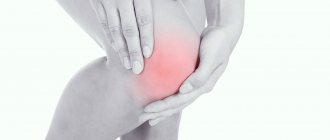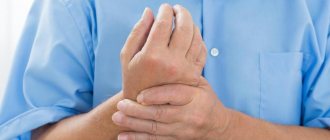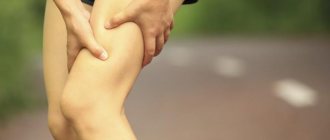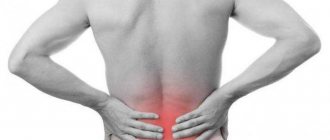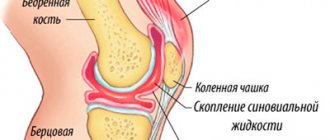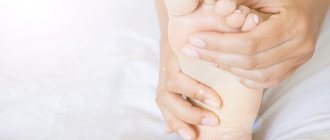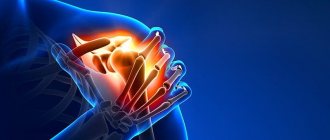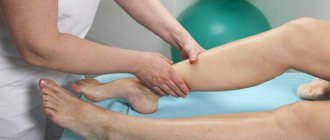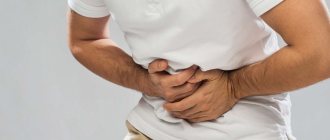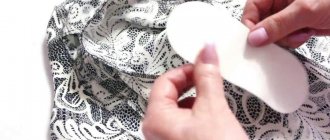Elbow pain is a fairly common phenomenon that many clinic patients complain about. It can bother you at any age, affect the left or right joint and can cause a lot of unpleasant moments, since it limits movement and reduces the quality of life.
The elbow joint itself is a movable connection of a long tubular bone, which is the skeletal basis of the shoulder, as well as the ulna and radius. It has a complex structure, as it is formed by three joints enclosed in a single capsule. The latter is innervated by the median, ulnar and radial nerves. The joint is fed from its own network formed by recurrent and collateral arteries.
The variety of movements available to the elbow is provided by four ligaments. Thanks to them, a person can perform flexion/extension, rotation, inward and outward movement. Any disorder associated with a change in the structure or physiology of the elbow joint manifests itself as pain symptoms. Its intensity depends on the pathological process and may be accompanied by swelling, redness, and a local increase in temperature.
CELT specialists will help you find out the cause of pain in the elbow joint. Our multidisciplinary clinic has the widest capabilities for diagnostic studies, allowing us to correctly identify the source of the problem and prescribe adequate treatment. You can find out our prices by going to the “Services and Prices” tab or by contacting our operators.
At CELT you can get advice from a specialist algologist.
Make an appointment
Injuries
If the elbow joint hurts when pressed, you need to check for bruises, dislocations and sprains. Acute sensations may not appear immediately after the injury, but after 1-3 days. You can injure your hand at home, during training, or through excessive physical activity. Often, such a symptom is accompanied by swelling, a feeling of heat at the site of injury, difficulty in flexion and extension, and discomfort in the entire arm. Elbow pain that persists for more than 2 days, or even worsens, is a reason to immediately consult a doctor.
Methods of pain relief
First aid can be provided to yourself immediately, especially if acute pain occurs:
- eliminating any physical activity;
- fixing the injured elbow in one, half-bent position (a scarf will help);
- ensuring rest of the injured limb;
- for swelling, a cold compress will help (put ice in a bag, wet a towel or take a bottle of chilled liquid), apply periodically for 10-15 minutes, then wait half an hour;
- Painkillers will help eliminate pain: ointments (Traumel S, heparin ointment or Lyoton-gel);
- if the pain is unbearable, then painkillers Ibuprofen, Analgin or Nise will help.
Osteoarthritis and osteoarthritis
Osteoarthritis is a disease of the joint with the destruction of cartilage and its other structures, as a result of which a person’s arms hurt in the elbow joints, inflammation appears and functions are impaired. A characteristic sign of osteoarthritis is marginal bone growths - osteophytes. Osteoarthritis is a disease without a pronounced inflammatory nature, caused primarily by wear and tear of the joint due to age-related changes, injuries or stress. In modern medicine, they have come to the conclusion that any process of destruction of joint tissue causes inflammation, so today these concepts, osteoarthritis and osteoarthritis, have become synonymous. With osteoarthritis, the elbow hurts with exertion. The destruction processes in this case develop due to the thinning of the cartilage inside the joint, which leads to a change in the structure of the ligaments and bones. In a relaxed state, the hand does not cause discomfort, but with strong pressure or other loads, for example, lifting a heavy bag, pain and burning appear. Without treatment, the disease can spread to other joints, worsening a person's overall well-being and quality of life. Unlike osteoarthritis (or osteoarthritis), arthritis of the elbow joint is a disease accompanied by a pronounced inflammatory process. Arthritis is manifested by severe swelling and local fever. Progressive arthritis of the elbow joint reduces the mobility of the limb and significantly reduces the amplitude of possible movements. Without proper treatment, the risk of joint contracture increases, a complication in which the arm is forced to be fixed in one position.
Prevention of elbow pain
The health of the joints plays an important role because it has a direct impact on a person’s quality of life. Restriction in their movements and pain symptoms do not allow them to perform usual actions and reduce it. Preventive measures are as follows:
- A diet containing essential vitamins, microelements and substances beneficial to the body;
- The use of orthoses for intense loads on the joint;
- Performing exercises to strengthen ligaments and muscles;
- Elimination of hypothermia;
- Timely seeking professional medical help in case of loss of sensitivity and limited movement.
CELT specialists know how to restore your joy in life and relieve you of discomfort. Contact us!
Make an appointment through the application or by calling +7 +7 We work every day:
- Monday—Friday: 8.00—20.00
- Saturday: 8.00–18.00
- Sunday is a day off
The nearest metro and MCC stations to the clinic:
- Highway of Enthusiasts or Perovo
- Partisan
- Enthusiast Highway
Driving directions
Epicondylitis
If your arm hurts on the inside or outside of the elbows, epicondylitis can be suspected. It is also called the disease of tennis players and golfers: the destruction process affects the elbow joint, the surrounding tissues and muscles of the forearm - right or left, and extremely rarely - both. Ordinary movements are easy, but with monotonous exercises or increased loads, or performing rotational movements, a nagging pain in the elbow joint appears. Patients with epicondylitis react acutely to flexion and extension of the elbow, wrist and clenching of the hand into a fist. Permanent microdamage to the elbow joint leads to inflammation, impaired blood flow, scarring and muscle spasms. The disease especially often worries people over 40 years of age, whose profession involves constant “work with their hands” - athletes, machinists, drivers and even office workers.
Preventive measures
Avoiding the development of severe infectious and inflammatory diseases that affect joints and lead to the inability to fully flex and straighten a limb is possible only by leading a healthy lifestyle. Timely treatment of concomitant diseases, inflammatory and infectious, also plays an important role.
People who play sports must properly distribute the load to prevent overworking of muscles and tendons. To avoid damaging the joint, it is recommended to wear a special fixing bandage on the elbow during physical activity.
Bibliography:
- https://otravmah.com/svyazochnyiy-apparat/bolit-lokot
- https://sustavlive.ru/boli/lokot/bol-v-loktevom-sustave-pri-sgibanii-i-razgibanii-chem-lechit.html
- https://sustavzdorov.ru/boli/bol-v-loktevom-sustave-pri-sgibanii-i-razgibanii-242.html
- https://ortocure.ru/kosti-i-sustavy/boli-i-hrusty/v-lokte-pri-sgibanii-i-razgibanii.html
Bursitis
Pain when bending and straightening the arm can also signal bursitis. When a joint is damaged, the cells of the synovial membrane actively produce fluid that accumulates inside the joint capsule. As a result, a characteristic lump or swelling usually forms on the outer side of the elbow, and the process of its enlargement is accompanied by pain, a local increase in temperature and redness of the skin. Acute bursitis is characterized by severe pain and limited range of motion. In the chronic form, a moderate burning sensation is felt, the elbow seems thickened. In some cases, bursitis leads to complications - a purulent process. To determine the specific type of disease, a puncture may be prescribed.
Osteochondritis dissecans
Osteochondritis dissecans is the death of a part of the bone, in this case in the elbow joint, in the area of the articular cartilage. With this pathology, cartilage tissue and a fragment of adjacent bone are separated and displaced into the joint cavity, causing pain - moderate and intensifying with movement. In later stages, symptoms such as “jamming” of the joint, a reduction in the range of motion, and chronic synovitis—inflammation of the joint membrane—are observed. The disease develops due to a local disturbance of blood flow in the elbow joint, most often occurring in men under the age of 30. Separately, it is worth noting such a dangerous symptom as a burning sensation in the shoulder or elbow of the left arm, associated with chest pain, decreased blood pressure and rapid pulse. Such signs may indicate the onset of a myocardial infarction, so if they are detected, you must urgently call an ambulance.
Why you shouldn't self-medicate
We have already said that loss of mobility of the elbow joint can be a consequence of dangerous conditions: pain in this area can be caused by disorders in the spine and even the brain.
A situation in which a patient buys a “universal” ointment advertised on TV and tries to relieve pain with it is fraught with aggravation of the condition. During self-treatment, the acute inflammatory process and disturbances in the passage of nerve impulses may intensify. And if at the initial stage they can be eliminated by methods of manual therapy and drug treatment, then in an advanced situation surgical intervention will most likely be required.
Diagnosis of pain
For elbow pain, diagnosis begins with a consultation. The doctor conducts a survey to find out whether the patient has had any past or recent injuries, surgeries or treatments, and whether there are any hereditary factors that may affect the current condition of the joints. Next, the joint site is examined and felt (palpation), joint mobility and reaction to various positions of the limb are assessed. Most likely, to make a diagnosis you will have to visit several doctors - a surgeon, osteopath, neurologist, as well as a rheumatologist if you suspect rheumatoid arthritis - an autoimmune disease of the joints. A visit to a traumatologist may be required if there are injuries, dislocations, or sprains.
Since pain accompanies many diseases, the examination must exclude tumors and infections. Standard laboratory tests include blood and urine tests, as well as blood biochemistry. This list can be supplemented by tests prescribed by specialists: taking a sample of synovial fluid, tests for rheumatoid factor, C-reactive protein, etc. A comprehensive examination is necessary to timely and accurately determine the cause of the elbow joint disease.
In addition to examination, consultations and tests, diagnostics include:
- ultrasound examination - allows you to see damage to the structure of the joint, signs of inflammation, fluid accumulation, pathological changes in cartilage;
- radiography - shows the condition of the bones that form the joint, reveals bone growths, calcium deposits, deviations in the size of the joint space;
- computed tomography - helps to see all pathological, inflammatory and destructive changes in bone tissue;
- magnetic resonance imaging - reveals degenerative processes, tumors, injuries, foci of infections and inflammations.
Based on the diagnostic results, treatment is prescribed that eliminates the cause of elbow pain and alleviates the patient’s condition.
Recommended Treatments
The treatment regimen will depend on the pathology identified by the specialist.
If it is a dislocation/bruise or sprain, the doctor will prescribe a therapeutic course, accompanied by the use of ointments, painkillers, traditional recipes, physical therapy and physiotherapy.
Necessary procedures to help establish the diagnosis:
- radiography;
- Ultrasound;
- laboratory tests (urine and blood tests).
In case of inflammatory processes (development of arthritis, bursitis or epicondylitis), the specialist’s task is to quickly eliminate the focus that is causing dangerous changes, that is, stop the inflammation, and at the same time reduce pain. Used: NSAIDs, various glucocorticosteroids, essential vitamins with antibiotics.
Stages of recovery: chondroprotectors, courses of physiotherapy, regular physical therapy, massage, manual therapy. Traditional methods: natural herbal decoctions, compresses (burdock or cabbage leaves are used), clay wraps, treatment with homemade ointments, honey.
With degenerative-dystrophic changes (development of gout, osteoarthritis or arthrosis), the inflammation is weak, there are no acute signs. The main problem is the destruction of cartilage, so the goal of therapy is to stop the process of abrasion and destruction of cartilage tissue and restore cartilage. Treatment: use of chondroprotectors, NSAIDs, development of a diet.
For gout, uricosuric and uricodepressive drugs are needed to eliminate acid accumulation. Various dietary supplements and multivitamins, special mineral complexes that can improve the condition of cartilage will be useful. Physiotherapy with exercise therapy will be mandatory, preferably sanatorium-resort treatment. Folk remedies will be a good help.
In case of neurological pathologies, consultation with a neurologist and rapid elimination of the factors that caused the pinched nerves are necessary. Recommendations include immobilization of the most damaged joint, the use of special exercises and drugs that can normalize neurohumoral regulation, and the prescription of painkillers (Analgin, Ibuprofen and other drugs). B vitamins (via injections) will be helpful. Severe injuries may require surgery.
If an injury occurs (fracture, crack), then examination by a traumatologist or orthopedic surgeon is mandatory. Fixation of the affected joint is required: the use of a plaster, an elastic bandage or an orthosis. The patient is prescribed anesthetics, a course of NSAIDs, the necessary antibiotics and muscle relaxants, vitamins, and chondroprotectors.
Severe injuries may require surgery.
Rehabilitation period: special exercises, vitamins, anti-inflammatory drugs, useful physiotherapeutic procedures.
Treatment is prescribed after diagnosis by a specialist.
